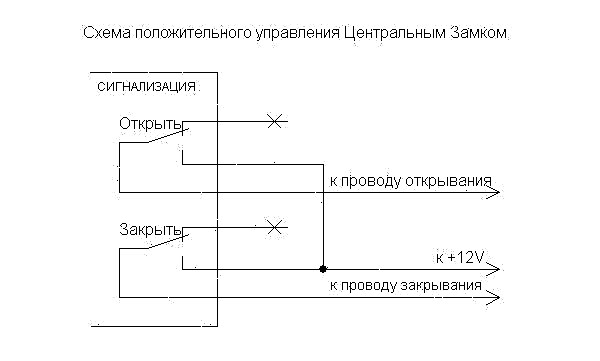
The content of the article:
- Unmanned vehicles in Europe
- Russian examples of unmanned vehicles
- How life will change with the advent of drones
- What can hinder the development of transport without human intervention
- Legal issues
- Safety
- The possibility of hacking cars and hacker attacks
- Lack of necessary infrastructure
- The high cost of drones
In the future, unmanned vehicles will completely replace the usual cars, buses, and trains driven by humans. It will definitely happen! The only question is when exactly. Many experts agree that this will happen in about 20 years. Self-driving cars will replace traditional cars, as they once replaced horses. What do Europe and Russia need to do to prepare for this? What problems exist and can they be solved?
Unmanned vehicles in Europe

Already today, unmanned vehicles can be found on European highways. While we are not talking about mass projects, basically such machines are being tested, but their developers claim that they will soon be able to mass-produce them. And since hundreds of billions of dollars are invested in these projects, their words can be trusted.
Here are some examples of successful autonomous vehicles:
- In the spring of 2016, 10 trucks from different manufacturers drove along European roads: Daimler, MAN, Scania, IVECO, Volvo, DAF. The cars left Sweden, Belgium and Germany on March 29 and arrived in Rotterdam on April 6. The total length of their route was 2,100 kilometers. At the same time, there were drivers in the cab, but they did not drive the trucks. They were controlled by artificial intelligence using wireless access.
At the same time, the fuel consumption of the car decreased by 10%, since the trucks drove one after another at a distance of 0.5 m, which reduced the frontal resistance. Regular truckers cannot keep that distance, but robots can do it easily. At the same time, not a single car violated traffic rules.
The owners of large transport companies are interested in the possibility of purchasing unmanned trucks, as this will reduce their costs and increase profits (they will not have to pay the driver's salary, and less money should be spent on fuel).
The largest manufacturers plan to produce about 8 million of these trucks by 2025.
- Renault-Nissan has released the Pivo 2, which can move in city traffic without human intervention. The drone communicates with other vehicles and chooses the correct distance to avoid collisions. In this case, the car can even go sideways.
- Audi developed the TTS self-driving racing car, which drove unmistakably 20 kilometers of dangerous corners.
Similar buses operate in the Greek town of Trikala. They were developed by the French company RoboSoft. In many European cities, unmanned trains are actively used in the metro.
This list can be continued indefinitely. One thing is clear, self-driving cars are already a reality in Europe. So far in limited quantities, but things are changing.
Unmanned vehicles in Russia

The Russian Federation is still far behind in this regard. The government annually allocates money to domestic companies to create autopilot technologies. An autonomous control system will appear around 2020, and in a year, manufacturers plan to mass-produce domestic unmanned vehicles.
AvtoVAZ is actively cooperating on drones with FSUE NAMI. The work of the autopilot in Lada Kalina has already been tested. GAZ Group demonstrated the unmanned GAZelle Business. Top managers of the company announced that they would start producing self-driving cars by 2030. True, this requires state support.
KAMAZ has advanced the furthest. Her truck was able to drive 10 kilometers along the Moscow - St. Petersburg highway. At the same time, the company plans to start mass production of drones in 2025.
According to experts, about 200 unmanned vehicles will appear in the Russian Federation by 2025, and by the middle of this century there will be 11 million of them.
How our lives will change with the advent of drones

Self-driving cars will bring global changes to the global economy. It should be understood that many firms and factories will cease to exist. However, road safety will increase significantly, and the number of accidents will decrease (by 80%). This will save thousands of human lives. The engineering industry is modernizing as almost all unmanned projects run on electricity.
Self-driving cars will be used en masse as taxis. Moreover, the fare will be significantly reduced, as the human factor will disappear.
Studies have shown that car owners spend only 4% of the year in their cars, the rest of the time the car is parked or in the garage. This is irrational, given the cost of car maintenance. Therefore, many people will use the services of unmanned taxis. Owning a private car would be meaningless.
Over time, the auto insurance market will disappear, as self-driving cars will not get into accidents. Parking lots, which now occupy huge areas near offices, houses and shopping centers, will disappear. Self-driving cars will constantly move, so they don't need parking. The valet service will disappear.
Delivery of goods will also be carried out without human intervention.
Unfortunately, many people will lose their jobs. This applies to taxi drivers, truckers, valet drivers, public transport drivers, and so on. But with the advent of cars, horse-drawn cabbies also lost their earnings. These are the realities of life.
What can hinder the development of unmanned vehicles in Europe and Russia

Nothing can hinder progress. Unmanned vehicles will sooner or later become commonplace in our country. This is a fact to be resigned to and to be prepared for.
However, there are problems, and they will have to be addressed in all countries. There are practically no technical issues. Manufacturers have proven that they can create unmanned vehicles that can move on public roads with little or no accidents. But there are other problems. Here are the main ones:
- Legal issues;
- Security questions;
- The possibility of hacking cars and hacker attacks;
- Lack of infrastructure;
- Expensive cars.
Now we will consider all these problems in more detail.
Legal issues

All experts believe that the main problem is the lack of a legal and regulatory framework. After all, it is not clear what legal status an electronic system controlled by a car has, what responsibility it bears in the event of an accident.
The farthest in this regard have advanced in the United States. NHTSA in some states (Florida, Michigan, Nevada) has officially equated the driver who drives the car and the robot driving the Google self-driving car. This solution has been awaited by all American drone manufacturers, as it removes a key problem in the development of such systems.
It should be noted that now the legislation of many countries prohibits the use of autonomous cars on the roads.
Certain legislative initiatives concerning non-carriage of transport have been adopted in the EU countries. At the same time, all countries are obliged to comply with the Vienna Convention on Road Traffic, according to which the driver must constantly monitor his car. Namely, this paragraph of the Convention prevents the emergence of unmanned vehicles on public highways.The European Union plans to introduce special amendments to the Convention this year, which will allow more active development of unmanned technology. The EU countries call on the Netherlands, which holds the presidency this year, to speed up the procedure for introducing these amendments.
Alas, in Russia there is still no legislation regulating the use of drones. However, work in this direction is underway. So, at the end of March 2016, Russian deputies proposed to allow the use of unmanned vehicles on the roads only with a driver in the cabin, so that he could take control of transport in case of danger.
It is still not clear who will be responsible in the event of an accident involving a drone - the driver, the company that developed the artificial intelligence system, or the automaker that sold the car. So far, there are disputes on this topic. At the moment, the driver is responsible for everything.
Domestic parliamentarians will have to amend the Criminal and Civil Codes. But at the same time, they promise to do everything by the end of this year.
Safety

Security issues are the responsibility of the software developers. Studies have shown that self-driving cars rarely get into accidents. However, rarely does not mean never.
So, on February 14, 2016, a self-driving car from Google collided with a municipal bus. This happened when the Google mobile drove around the sandbags that were lying on the road. No one was injured in the accident, only the left side of the bus was slightly damaged.
But, alas, there is already a human life on the account of drones. On May 7, 2016, in Florida, a Tesla Model S car, which was operating in autopilot mode, collided with a road train that entered an intersection. Mobileye, a company that customizes optical cameras at Tesla, said their products avoid collisions, but do not perceive interference from the right or left. The system is being actively improved.
You need to understand that all unmanned vehicles are tuned for impeccable compliance with traffic rules. At the same time, no one guarantees that other road users will follow the rules, and this can lead to accidents. Especially in Russia. And there are already examples.
Italian scientists recently organized an unmanned car ride from Europe to China. However, after crossing the Russian border, they encountered Russian driving culture. They complained that in Moscow, where traffic is very dense, no one observes the rules. It is extremely difficult for drones to work in such conditions.
Therefore, accidents are, of course, possible. But their number will still significantly decrease.
The possibility of hacking cars and hacker attacks

Since autopilot is a computer, it can be hacked. Professional hackers can easily break into even the most sophisticated vehicle. At one conference, hackers broke into a Tesla car.
It is very dangerous. Imagine what could happen if a car was broken into at a speed of 100 km / h. Moreover, terrorists can do this.
Therefore, companies are spending billions of dollars to protect drones from hacking.
Lack of infrastructure

So far, neither European nor Russian cities have the proper infrastructure for the development of unmanned vehicles. Given the rapid development of the self-driving car industry, officials from the domestic Ministry of Transport have created a special interdepartmental group to solve these problems.
For drones, they plan to build a highway from Moscow to St. Petersburg. In this case, the route must have equipment for constant communication and informing about dangerous situations.
The high cost of drones

Since self-driving cars are new, the cost will be high. Therefore, not every Russian will be able to purchase such a car. Naturally, the price will decrease over time.
These are the key problems hindering the development of unmanned vehicles.
Let's summarize
The days of humans driving are numbered. In 20-30 years, soulless computers will control vehicles instead of humans. And everyone needs to prepare for this now.











